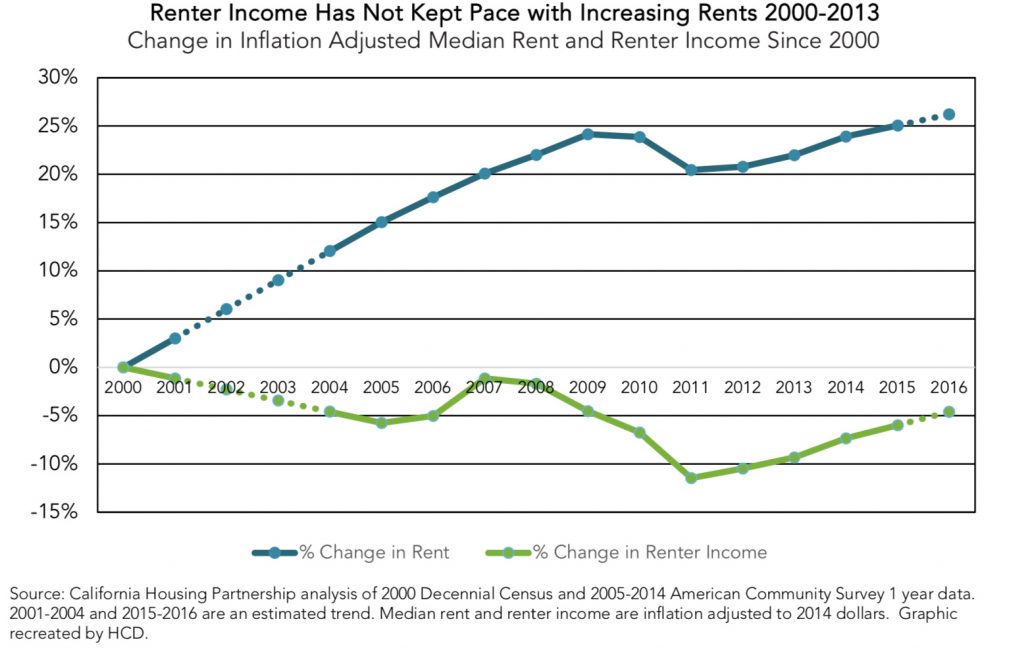From the mayor:
This week at SANDAG (the county’s regional transportation board), we heard for the first time the amount of housing the state is proposing for our county in the next eight-year housing cycle. I hope you’re sitting down – it’s 21,000 new homes annually, which is more than three times the 7,000 homes that San Diego County is currently producing each year.
The total number countywide is 171,685 housing units for the 2021-2028 housing cycle. Each city’s allotment from the California Department of Housing and Community Development (HCD) won’t be determined until 2019, as the proposed methodologies are still in draft form. Once SANDAG assigns Encinitas our new housing numbers, scheduled for October of 2019, Encinitas will have 18 months to update our housing plan for state approval.
To recap, here’s the process: the state assigns the number of homes to the county, the county divides that number of homes among all 18 cities and the unincorporated area using a complex formula and then each city is required to put together a plan that hits those numbers, and the plan heads back to the state for approval.
These increasingly onerous housing mandates can seem unrelated to reality. Driving around the county, we all notice lots of new homes constantly being built. The idea of tripling that just doesn’t seem realistic. Furthermore, the most common feedback I hear from constituents is concern about the time they spend sitting in traffic, which is inevitably lengthened by adding more homes with more cars.
Despite this on-the-ground reality, housing policy discussions take place in a seemingly alternative universe, where growth forecasts indicate that cities aren’t even close to keeping up with demand. This demand is based on “housing formation” trends, the amount of “overcrowding” within existing homes, birth rates, projections of housing loss, and anticipated new jobs in the county. These factors all drive the need for more housing. And then you look at the reality that rental increases are far outpacing the income of those who rent (see the chart above) and the supply problem seems obvious.
HCD’s presentation at SANDAG last Friday elicited anger and disbelief from several San Diego County mayors. Encinitas has been in the trenches with our housing battles much longer than some other cities. It’s clear to me that while some leaders are unhappy about current housing laws, new laws on the horizon from state legislators will be substantially more burdensome.
One proposed housing law, for example, would force cities to allow development up to eight stories near transit centers – something that I find completely unacceptable. The city opposes this bill.
Here’s a KPBS story that does a great job of highlighting the tension between state housing goals and cities’ desires for local control.
So we find ourselves in a challenging predicament.
I’m trying to do the best possible job navigating the housing realities facing us in Encinitas. Toward that goal, this last week we had a housing workshop ably organized by our former deputy mayor Lisa Shaffer to discuss updating the city’s long stalled “inclusionary” housing ordinance, which is the amount of affordable housing that developers are required to build when they build market rate projects. Check out the Encinitas Advocate story for more information on this key piece of the housing puzzle.
My approach involves several facets – helping guide the city toward updating policies such as the inclusionary ordinance, incentivizing more accessory units and simultaneously making sure we count every single granny flat that comes online, focusing on housing development in Encinitas that results in housing credit (rather than development that gives us no credit), and most importantly, choosing the sites required for upzoning to get us out of the penalty box, end the lawsuits based on violations from previous housing cycles and produce more affordable housing.
Creating and implementing housing policy is painful and exhausting in Encinitas but we press forward, doing our level best with all available tools and strategies.
More on the 89 acres they have identified as possibilities:
http://catherineblakespear.com/3-4-18-housing-plan-inches-forward-student-activists-encinitas-news/






The truth is that 21,000 is just a drop in the bucket needed in San Diego county. In New Jersey courts have recently begun enforcing mandates like this on municipalities because unlike CA that state does impose some judicially-enforceable remedies when cities use zoning to restrict immigration or growth. The long run answer is that zoning and other restrictive land use laws should be substantially liberalized where they can’t be eliminated. I am glad to see that the mayor in Encinitas is at least trying to find places to upzone for an additional 2,000 units.
Again, you can’t maintain a “Sanctuary City” policy for illegal immigrants in a welfare state. It’s not a civic plan. It’s wishful thinking that cannot conform to reality, ever.
The mayor of Oakland should have her office raided, and she should be placed under federal arrest. She is equivalent to some dumb redneck sheriff standing in the doors of a segregated university to obstruct admissions of minorities, since flagrantly protecting criminals, many of whom are on some type of gavernment assistance, is a stab in the back for our state’s homeless citizen communities, as well as minority citizens equipped with only high school educations, desperate for entry-level jobs, as well as working class citizens being confronted with lines going out the door, and down the block at community hospital emergency rooms.
Take a trip to Harbor General hospital emergency room at 6 in the morning, and you’ll be convinced that I’m not exaggerating. At that emergency room, you wait in line for an hour just to sign the waiting list, and there aren’t an abundance of English speakers. It is Kafkaesque, and it pays to remember the political regime Kafka lived under, and note any recognizable correlating patterns in the good state of California’s way of doing things. And consider doing something about it.
Otherwise get used to mini high rises in Encinitas, and Los Angeles proper serving as some dumb, cross-eyed country bumpkin’s idea of the Big Apple. Where everyone celebrates the price of everything, and the value of nothing.
And to everyone who’s family’s religious tradition includes voting democrat… how’s that been working out for you lately? Consider holding your nose for an election cycle or two, and give a few politicians a kick in the butt they’ve had coming.
Unless you believe a state essentially made up of scrubland can support our exponentially growing water, infrastructure, and waste disposal needs. If so, then just sit back, and watch the party… party.
This is really confusing to me. My experience living in the SF Bay Area (12 years) was that there were lots of available rentals (I never owned), but that never seemed to have any impact on price. Supply and demand really didn’t seem to be a factor. Rather it was location that determined what you would pay.
I left several years ago, but am close to relocating back to California, this time southern California. Looking around on Zillow and craigslist, it seems to be the same story. Lotsa of rentals, but again location determines price.
Could it be that California has such a variety of unique factors that the textbook laws of supply and demand just don’t apply as strictly as they do in places like Texas or Arizona or Ohio?
Could it be that California has such a variety of unique factors that the textbook laws of supply and demand just don’t apply as strictly as they do in places like Texas or Arizona or Ohio?
Welcome David!
Rich people make the market. The rest stand in awe.
“Textbook laws of supply and demand just don’t apply as strictly as they do in places like Texas or Arizona or Ohio?”
Textbook laws of supply and demand has worked ever since Glog got up early to collect sea shells that Hork and Hoozy wanted in exchange for Mammoth meat.
Their names were unusual because they were cave men.
@ daytrip…….:)
Economics 101 000 B.C.?
State says build so much housing that no one wants to live there anymore.
> Rich people make the market. The rest stand in awe.
The rich(est) set the margin and the rest are left behind.
But perhaps the climate in the coastal areas of California adds to the demand compared to the other places cited. Also Tx and Oh at least don’t have mountains and federal land holdings to constrain the size of cities. Further at least in Tx and Oh, Tx talking Houston and DFW and San Antonio/Austin, most of the land around cities is capable of fairly easy development, not subject to major wild fires etc.
The interesting unanswerable question is how much for example is San Diego’s climate worth compared to that of Dallas.